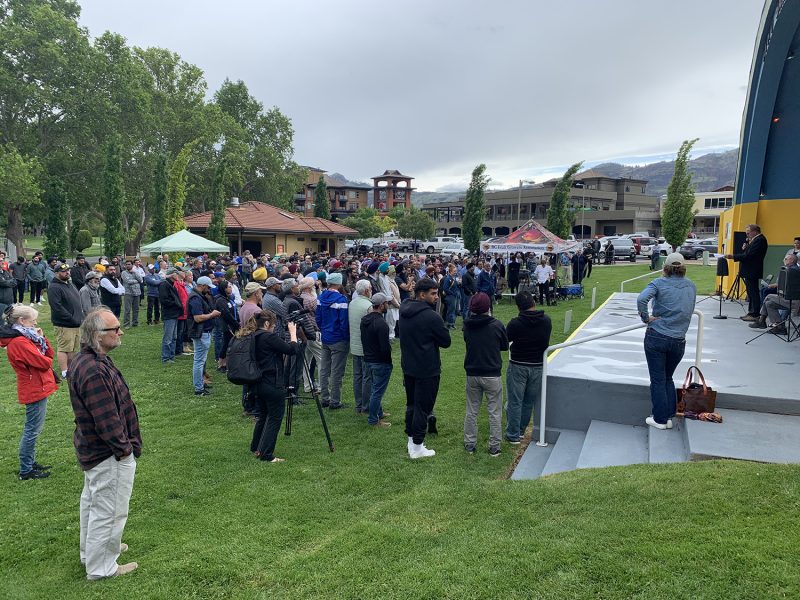Gray skies reflected the mood May 28 but the rain held off as some 250 fruit growers gathered in Osoyoos to express their concerns and appeal for government support.
The “I support BC Agriculture” rally, organized by the BC Fruit Growers Association in conjunction with the BC Grapegrowers Association, coincided with a government caucus meeting taking place in town.
While no politicians were invited to the rally, the BCFGA executive was able to meet with Premier David Eby and agriculture minister Pam Alexis earlier in the day.
“I think the premier and the ag minister get it,” says BCFGA president Peter Simonsen. “But I’m not really sure about the rest of the caucus.”
The cumulative effects of the 2021 heat dome, winter freezes and spring frosts have devastated the fruit industry in the Okanagan, Similkameen, and Creston valleys over the last three years.
Dead plum trees, peach trees without fruit, low-yielding cherry crops and hundreds of acres of vineyard with no leaves highlight the impacts of recent weather events.
“Apple prices have been low for the last five years and last year all the West Coast cherry production came on at the same time, and prices collapsed,” Simonsen says.
A 2018 BC government study found that 87% of the provincial population supports local agriculture, Simonsen says.
“We want the support of those 87%,” he says. “This rally is just the start.”
“Our retail system is broken, our production insurance system is broken and our regulatory system is broken,” adds BCFGA vice president Deep Brar. “I can see the pain in everyone’s eyes here today.”
Brar says that in 1985, the year before he was born, farmers were receiving about 32 cents a pound for good quality McIntosh apples.
“If you account for inflation at 2.9 percent, that Mac should be worth about 92 cents for the farmer today,” he says. “But the 2023 returns were 28 cents for that same Mac – that’s four cents less than 39 years ago, while today’s shopper pays $3 a pound.”
Agriculture is much bigger in BC than most people think, Simonsen says.
“The value of the crops we grow, our GDP is around $3 billion dollars per year. That’s on par with Alberta, Manitoba and Quebec. But the amount of support that the government puts back into agriculture per capita is the lowest in Canada,” he says.
BC has the best protection for farmland but the poorest protection for farmers, Simonsen says.
“We are asking for the government to put back the level of support we had when the ALR first came in,” Simonsen says.
REVISED May 29/2024 6:30 pm


 Millions added to Grand Forks flood mitigation
Millions added to Grand Forks flood mitigation